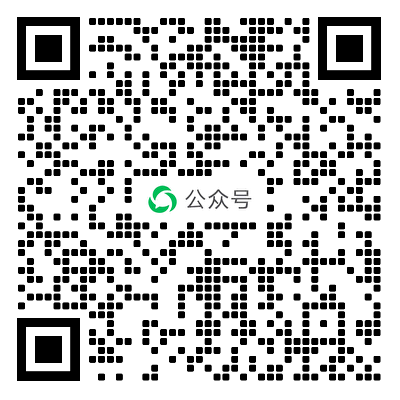Context
本篇我们讲 Context,Context 可以实现跨组件传递数据,大部分的时候并无需要,但有的时候,比如用户设置 了 UI 主题、地区偏好,如果从顶层一层层往下传反而有些麻烦,不如直接借助 Context 实现数据传递。
老的 Context API
基础示例
在讲最新的 API 前,我们先回顾下老的 Context API:
class Child extends React.Component {
render() {
// 4. 这里使用 this.context.value 获取
return <p>{this.context.value}</p>
}
}
// 3. 子组件添加 contextTypes 静态属性
Child.contextTypes = {
value: PropTypes.string
};
class Parent extends React.Component {
state = {
value: 'foo'
}
// 1. 当 state 或者 props 改变的时候,getChildContext 函数就会被调用
getChildContext() {
return {value: this.state.value}
}
render() {
return (
<div>
<Child />
</div>
)
}
}
// 2. 父组件添加 childContextTypes 静态属性
Parent.childContextTypes = {
value: PropTypes.string
};context 中断问题
对于这个 API,React 官方并不建议使用,对于可能会出现的问题,React 文档给出的介绍为:
问题是,如果组件提供的一个 context 发生了变化,而中间父组件的 shouldComponentUpdate 返回 false,那么使用到该值的后代组件不会进行更新。使用了 context 的组件则完全失控,所以基本上没有办法能够可靠的更新 context。
对于这个问题,我们写个示例代码:
// 1. Child 组件使用 PureComponent
class Child extends React.Component {
render() {
return <GrandChild />
}
}
class GrandChild extends React.Component {
render() {
return <p>{this.context.theme}</p>
}
}
GrandChild.contextTypes = {
theme: PropTypes.string
};
class Parent extends React.Component {
state = {
theme: 'red'
}
getChildContext() {
return {theme: this.state.theme}
}
render() {
return (
<div onClick={() => {
this.setState({
theme: 'blue'
})
}}>
<Child />
<Child />
</div>
)
}
}
Parent.childContextTypes = {
theme: PropTypes.string
};在这个示例代码中,当点击文字 red 的时候,文字并不会修改为 blue,如果我们把 Child 改为 extends Component,则能正常修改
这说明当中间组件的 shouldComponentUpdate 为 false 时,会中断 Context 的传递。
PureComponent 的存在是为了减少不必要的渲染,但我们又想 Context 能正常传递,哪有办法可以解决吗?
既然 PureComponent 的存在导致了 Context 无法再更新,那就干脆不更新了,Context 不更新,GrandChild 就无法更新吗?
解决方案
方法当然是有的:
// 1. 建立一个订阅发布器,当然你也可以称呼它为依赖注入系统(dependency injection system),简称 DI
class Theme {
constructor(value) {
this.value = value
this.subscriptions = []
}
setValue(value) {
this.value = value
this.subscriptions.forEach(f => f())
}
subscribe(f) {
this.subscriptions.push(f)
}
}
class Child extends React.PureComponent {
render() {
return <GrandChild />
}
}
class GrandChild extends React.Component {
componentDidMount() {
// 4. GrandChild 获取 store 后,进行订阅
this.context.theme.subscribe(() => this.forceUpdate())
}
// 5. GrandChild 从 store 中获取所需要的值
render() {
return <p>{this.context.theme.value}</p>
}
}
GrandChild.contextTypes = {
theme: PropTypes.object
};
class Parent extends React.Component {
constructor(p, c) {
super(p, c)
// 2. 我们实例化一个 store(想想 redux 的 store),并存到实例属性中
this.theme = new Theme('blue')
}
// 3. 通过 context 传递给 GrandChild 组件
getChildContext() {
return {theme: this.theme}
}
render() {
// 6. 通过 store 进行发布
return (
<div onClick={() => {
this.theme.setValue('red')
}}>
<Child />
<Child />
</div>
)
}
}
Parent.childContextTypes = {
theme: PropTypes.object
};为了管理我们的 theme ,我们建立了一个依赖注入系统(DI),并通过 Context 向下传递 store,需要用到 store 数据的组件进行订阅,传入一个 forceUpdate 函数,当 store 进行发布的时候,依赖 theme 的各个组件执行 forceUpdate,由此实现了在 Context 不更新的情况下实现了各个依赖组件的更新。
你可能也发现了,这有了一点 react-redux 的味道。
当然我们也可以借助 Mobx 来实现并简化代码,具体的实现可以参考 Michel Weststrate(Mobx 的作者) 的 How to safely use React context
新的 Context API
基础示例
想必大家都或多或少的用过,我们直接上示例代码:
// 1. 创建 Provider 和 Consumer
const {Provider, Consumer} = React.createContext('dark');
class Child extends React.Component {
// 3. Consumer 组件接收一个函数作为子元素。这个函数接收当前的 context 值,并返回一个 React 节点。
render() {
return (
<Consumer>
{(theme) => (
<button>
{theme}
</button>
)}
</Consumer>
)
}
}
class Parent extends React.Component {
state = {
theme: 'dark',
};
componentDidMount() {
setTimeout(() => {
this.setState({
theme: 'light'
})
}, 2000)
}
render() {
// 2. 通过 Provider 的 value 传递值
return (
<Provider value={this.state.theme}>
<Child />
</Provider>
)
}
}当 Provider 的 value 值发生变化时,它内部的所有 consumer 组件都会重新渲染。
新 API 的好处就在于从 Provider 到其内部 consumer 组件(包括 .contextType 和 useContext)的传播不受制于 shouldComponentUpdate 函数,因此当 consumer 组件在其祖先组件跳过更新的情况下也能更新。
模拟实现
那么 createContext 是怎么实现的呢?我们先不看源码,根据前面的订阅发布器的经验,我们自己其实就可以写出一个 createContext 来,我们写一个试试:
class Store {
constructor() {
this.subscriptions = []
}
publish(value) {
this.subscriptions.forEach(f => f(value))
}
subscribe(f) {
this.subscriptions.push(f)
}
}
function createContext(defaultValue) {
const store = new Store();
// Provider
class Provider extends React.PureComponent {
componentDidUpdate() {
store.publish(this.props.value);
}
componentDidMount() {
store.publish(this.props.value);
}
render() {
return this.props.children;
}
}
// Consumer
class Consumer extends React.PureComponent {
constructor(props) {
super(props);
this.state = {
value: defaultValue
};
store.subscribe(value => {
this.setState({
value
});
});
}
render() {
return this.props.children(this.state.value);
}
}
return {
Provider,
Consumer
};
}用我们写的 createContext 替换 React.createContext 方法,你会发现,同样可以运行。
它其实跟解决老 Context API 问题的方法是一样的,只不过是做了一层封装。Consumer 组件构建的时候进行订阅,当 Provider 有更新的时候进行发布,这样就跳过了 PureComponent 的限制,实现 Consumer 组件的更新。
createContext 源码
现在我们去看看真的 createContext 源码,源码位置在 packages/react/src/ReactContext.js,简化后的代码如下:
import {REACT_PROVIDER_TYPE, REACT_CONTEXT_TYPE} from 'shared/ReactSymbols';
export function createContext(defaultValue) {
const context = {
$$typeof: REACT_CONTEXT_TYPE,
// As a workaround to support multiple concurrent renderers, we categorize
// some renderers as primary and others as secondary. We only expect
// there to be two concurrent renderers at most: React Native (primary) and
// Fabric (secondary); React DOM (primary) and React ART (secondary).
// Secondary renderers store their context values on separate fields.
_currentValue: defaultValue,
_currentValue2: defaultValue,
// Used to track how many concurrent renderers this context currently
// supports within in a single renderer. Such as parallel server rendering.
_threadCount: 0,
// These are circular
Provider: null,
Consumer: null,
// Add these to use same hidden class in VM as ServerContext
_defaultValue: null,
_globalName: null,
};
context.Provider = {
$$typeof: REACT_PROVIDER_TYPE,
_context: context,
};
context.Consumer = context;
return context;
}你会发现,如同之前的文章中涉及的源码一样,React 的 createContext 就只是返回了一个数据对象,但没有关系,以后的文章中会慢慢解析实现过程。
React 系列
讲解 React 源码、React API 背后的实现机制,React 最佳实践、React 的发展与历史等,预计 50 篇左右,欢迎关注
如果喜欢或者有所启发,欢迎 star,对作者也是一种鼓励。










